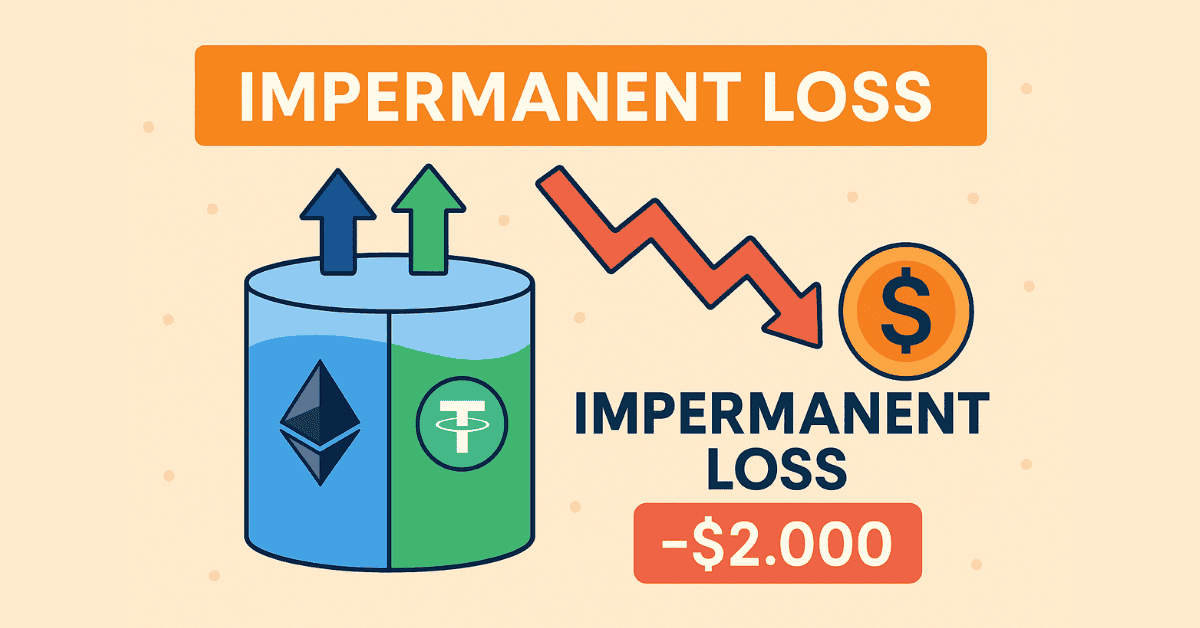
Avoiding Losses in DeFi: A Guide to Impermanent Loss
1. What Is Impermanent Loss?
Impermanent Loss (IL) is the potential loss liquidity providers may suffer when the value of deposited tokens changes compared to the time of deposit. The loss is "impermanent" because it may recover if token prices return to their original values.
2. How It Works
-
LPs deposit two tokens of equal value into a pool.
-
When one token’s price changes, arbitrage traders rebalance the pool, altering the token ratio.
-
Upon withdrawal, LPs receive a different amount of tokens, often worth less than if they had held them.
3. Example
-
Price Increases: You deposit 1 ETH and 2,000 USDT (worth 4,000 USD). ETH doubles in price to 8,000 USD. You withdraw 0.5 ETH + 4,000 USDT = 8,000 USD plus fees. If you held the assets instead, you'd have 10,000 USD. So the loss is 2,000 USD.
-
Price Decreases: ETH drops to 500 USD. You withdraw 2 ETH + 1,000 USDT = 2,000 USD plus fees. Holding would be worth 2,500 USD. The loss is 500 USD.
4. Why LPs Still Participate
-
IL becomes real only when assets are withdrawn. If the price reverts, losses may disappear.
-
LPs earn trading fees. With high volume, these fees can offset losses from IL.
5. How to Minimize Impermanent Loss
- Choose stable or low-volatility pairs, such as stablecoins.
- Select pools with high fees and trade volume to earn more.
- Wait for price recovery before withdrawing liquidity.
- Start with a small investment to reduce exposure.
- Use AMMs with concentrated liquidity mechanisms, which allow better control and IL mitigation.